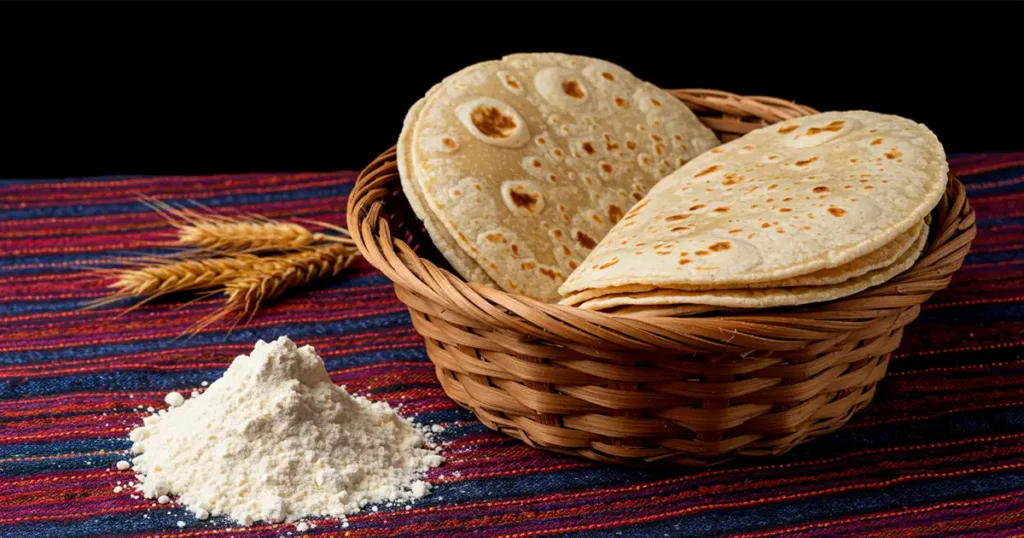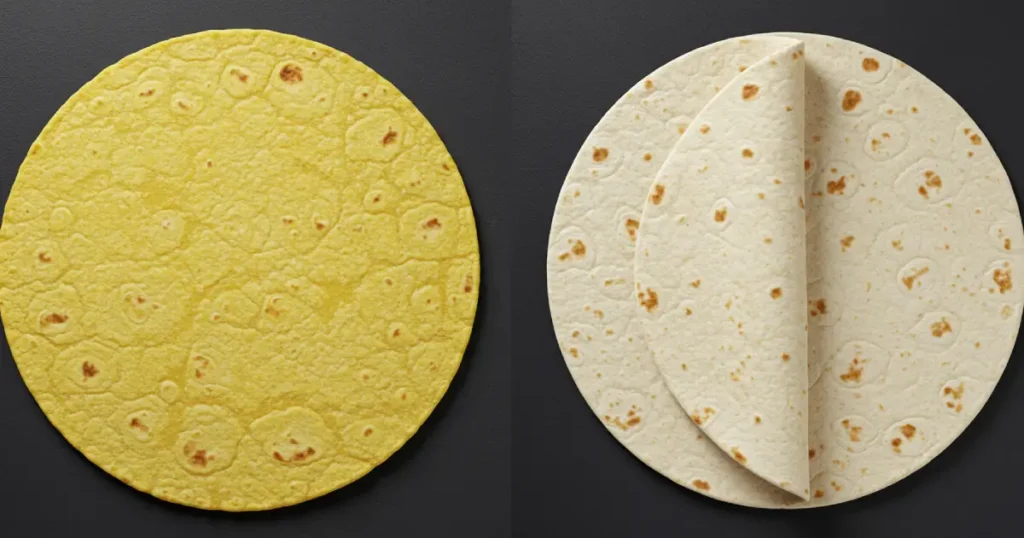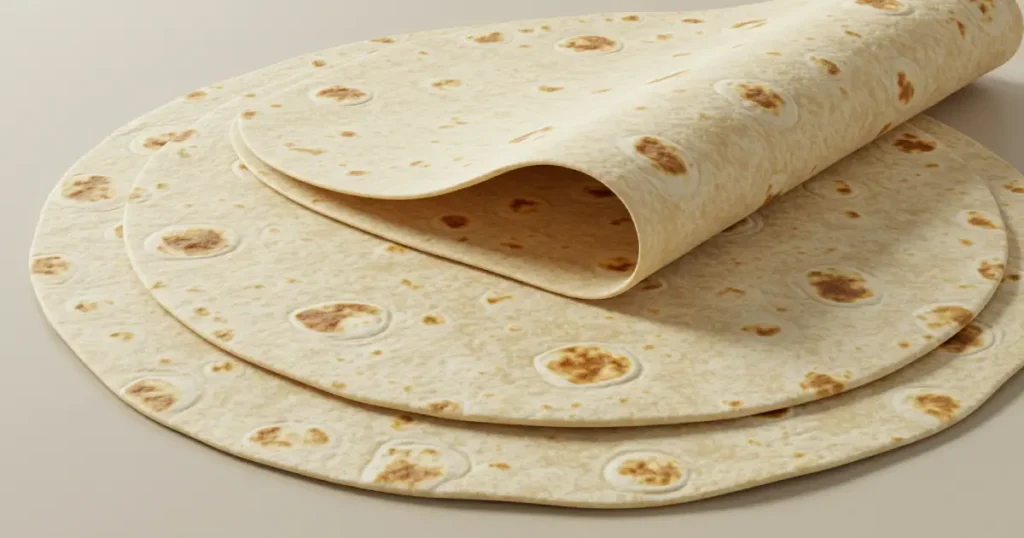Tortillas de Harina Guatemala: Recipe, History & Where to Find Them

Guatemala, a land vibrant with ancient traditions and breathtaking landscapes, boasts a culinary heritage deeply rooted in Mayan culture, where corn reigns supreme. The humble corn tortilla, or tortilla de maíz, is an undeniable cornerstone of Guatemalan daily life, an ever-present companion to countless meals.
However, nestled within this corn-centric gastronomic tapestry is another, perhaps less globally recognized but equally delightful, player: the tortilla de harina, or flour tortilla. While not as historically ingrained as its maize counterpart, the flour tortilla has carved out its own special place in Guatemalan kitchens and hearts, offering a different texture, flavor, and versatility.

This article delves into the world of tortillas de harina in Guatemala, exploring their history, preparation, cultural nuances, and the unique ways they are enjoyed in this beautiful Central American nation.
For many, the mention of Guatemalan tortillas immediately conjures images of golden or dark, earthy corn discs, patted out by hand and toasted to perfection on a comal. And rightfully so. The connection between Guatemala and corn is profound, woven into the very fabric of its identity for millennia. Yet, to overlook the presence and appeal of flour tortillas would be to miss a subtle but significant aspect of its evolving culinary scene. These softer, often larger, and more pliable wheat-based flatbreads offer a delightful contrast and serve as a canvas for a variety of flavors and dishes, reflecting both historical introductions and modern culinary adaptations. Join us as we journey into the warm, inviting world of tortillas de harina in Guatemala.
The Arrival of Wheat: A Culinary Shift with Spanish Influence
The story of flour tortillas in the Americas is inextricably linked to the arrival of the Spanish in the 16th century. Prior to European contact, wheat was unknown in Mesoamerica. The indigenous populations, including the Maya in Guatemala, had domesticated and perfected the cultivation of maize, which formed the basis of their diet and, indeed, their cosmology.
With the Spanish came not only new governance and religion but also new crops and livestock. Wheat was among these introductions. Historical sources, such as those documented by Wikipedia regarding the flour tortilla's origins, indicate that wheat was first introduced around Mexico City in 1523 and its cultivation gradually spread. Catholic monks played a significant role in disseminating wheat, as it was essential for the preparation of unleavened bread for religious ceremonies. Regions with temperate climates, often at higher altitudes, proved suitable for wheat cultivation.
While the most detailed accounts focus on Mexico, this agricultural transformation undoubtedly extended south into Guatemala, also part of the Spanish colonial empire. The Spanish palate, accustomed to wheat-based breads, would have sought familiar starches. Initially, wheat might have been consumed more by the Spanish colonizers and their descendants. However, over time, indigenous and mestizo populations began to incorporate wheat flour into their own culinary repertoires, leading to the birth of the flour tortilla. This was a fusion of European ingredient (wheat) with an existing Mesoamerican culinary form (the tortilla).
The exact timeline for the widespread adoption of flour tortillas specifically within Guatemala is less precisely documented than that of corn. However, it's logical to assume a gradual integration, perhaps more pronounced in certain regions or among specific social groups. Unlike the immediate and widespread suitability of corn to the diverse Guatemalan climates, wheat cultivation would have been more restricted, potentially influencing the initial prevalence of flour tortillas.
Tortillas de Harina vs. Tortillas de Maíz: A Tale of Two Tortillas in Guatemala
In Guatemala, the conversation about tortillas almost invariably begins with corn. Tortillas de maíz are the undisputed champion, the daily bread, the soul food. They are typically made from nixtamalized corn (corn soaked and cooked in an alkaline solution), ground into masa, then shaped and cooked. This process imparts a unique flavor and nutritional profile. As noted by various sources, including TikTok discussions and culinary blogs, Guatemalan corn tortillas, especially those handmade in rural areas or traditional tortillerías, are prized for their taste and texture – often thicker and heartier than their Mexican counterparts.

So, where do tortillas de harina fit in?
- Ingredients & Flavor: The most obvious difference lies in the main ingredient. Flour tortillas use wheat flour, resulting in a milder, less earthy flavor compared to the distinct taste of corn. The fat used (traditionally lard, but also vegetable shortening, oil, or even butter) also contributes significantly to the flavor and texture of flour tortillas, making them richer.
- Texture: Flour tortillas are generally softer, more pliable, and often chewier than corn tortillas. Corn tortillas, especially when freshly made, have a tender yet slightly more robust texture; if left to cool or dry, they become more brittle. The elasticity of flour tortillas makes them ideal for wrapping and folding.
- Preparation: While both are cooked on a comal (a flat griddle), the dough preparation is different. Flour tortilla dough requires kneading and a resting period to develop gluten, which contributes to its characteristic texture.
- Usage: In Guatemala, corn tortillas accompany almost every traditional meal – stews (caldos and cocidos), grilled meats (asados), beans (frijoles), and eggs. Flour tortillas, while sometimes used as a general accompaniment, also feature in specific ways. They might be preferred for certain types of quesadillas (though corn tortilla quesadillas are also common), for making gringas (a type of quesadilla with meat, often al pastor), or for simpler meals like a doblada (a folded tortilla with cheese or beans). They are also the go-to for wrap-style creations, reflecting a more modern or internationally influenced culinary trend.
- Nutritional Profile: Generally, corn tortillas made from whole grain, nixtamalized corn offer more fiber and are a whole grain food. Flour tortillas, especially those made with refined white flour, are less nutrient-dense, though whole wheat flour tortillas are becoming more available, offering a healthier alternative.
It's not a competition of which is "better," as both have their cherished place. However, understanding the dominance and profound cultural significance of corn tortillas is crucial to appreciating the specific, and sometimes more niche, role of flour tortillas in Guatemala.
Crafting Authentic Guatemalan-Style Flour Tortillas: A Homemaker's Guide
One of the true joys of any cuisine is recreating its flavors at home. Making tortillas de harina in the Guatemalan style is a rewarding experience, filling your kitchen with the comforting aroma of warm bread. While recipes can vary slightly from household to household, the core ingredients and techniques are fairly consistent. Based on various recipes shared online, including those on TikTok and YouTube by Guatemalan home cooks, here’s a guide:
Key Ingredients:
- All-Purpose Wheat Flour: This is the standard base. Some may experiment with bread flour for a chewier texture, but all-purpose works perfectly. Typically, you'd start with 3-4 cups.
- Fat: This is crucial for flavor and softness.
- Lard (Manteca de Cerdo): Traditionally preferred for its rich flavor and the resulting tender-crisp texture. Recipes often call for about 1/3 to 1/2 cup for 3 cups of flour.
- Vegetable Shortening: A common alternative to lard, providing a similar texture.
- Oil or Melted Butter/Margarine: Some modern recipes might use these, yielding a slightly different flavor and texture. One TikTok recipe mentions using 2 ounces of butter, margarine, or lard for 3 cups of flour.
- Salt: Essential for flavor. Usually, around 1/2 to 1 teaspoon per 3 cups of flour.
- Warm Water: Approximately 1 cup for 3 cups of flour, but this can vary depending on the flour's absorbency and humidity. It should be warm to the touch, not hot.
- Baking Powder (Optional): Some recipes, like one noted by Allrecipes (though for a general "Authentic Mexican Tortilla" which shares similarities), include a teaspoon or two of baking powder per 3 cups of flour. This can help create a slightly puffier and softer tortilla. Many traditional Guatemalan home recipes, however, achieve puffiness through proper kneading and cooking without baking powder.

Step-by-Step Preparation:
- Combine Dry Ingredients: In a large bowl, whisk together the flour, salt, and baking powder (if using).
- Cut in the Fat: Add the lard or shortening to the flour mixture. Using your fingertips, a pastry blender, or even a fork, "cut" the fat into the flour until the mixture resembles coarse crumbs or small peas. If using oil, you'll mix it in after adding some water.
- Add Warm Water: Gradually add the warm water to the flour mixture, mixing with your hand or a wooden spoon until a shaggy dough begins to form. You might not need all the water, or you might need a little more. The goal is a soft, but not overly sticky, dough.
- Knead the Dough: Turn the dough out onto a lightly floured surface. Knead for 5-10 minutes. The dough should become smooth, elastic, and pliable. It shouldn't be sticky; if it is, add a tiny bit more flour. Proper kneading is key to developing the gluten, which gives the tortillas their characteristic stretch and softness.
- Rest the Dough: This is a crucial step! Place the kneaded dough back into the bowl, cover it with a damp cloth or plastic wrap, and let it rest for at least 30 minutes to an hour at room temperature. Some recipes suggest resting for even longer. This allows the gluten to relax, making the tortillas much easier to roll out and more tender. Some cooks divide the dough into balls before resting.
- Divide and Shape into Balls: After resting, punch down the dough gently if it has puffed up. Divide it into equal-sized portions. For medium-sized tortillas (about 6-8 inches), golf ball-sized portions work well. Roll each portion into a smooth ball.
- Roll Out the Tortillas: On a lightly floured surface, take one dough ball and flatten it slightly with your palm. Using a rolling pin, roll it out from the center outwards, rotating the dough frequently to create a thin, round tortilla. Aim for a thickness of about 1/8 inch or even thinner, depending on your preference. Don’t worry if they aren’t perfectly round – rustic charm is part of the appeal!
- Cook the Tortillas: Heat an ungreased comal, cast-iron skillet, or heavy-bottomed frying pan over medium-high heat. The surface should be hot enough that a drop of water evaporates quickly.
- Carefully lay a rolled-out tortilla onto the hot comal.
- Cook for about 30-60 seconds on the first side, or until it starts to show bubbles and some light brown spots.
- Flip the tortilla and cook for another 30-60 seconds on the other side. It should puff up in places – this is a good sign! Some cooks press gently on the puffing tortilla with a spatula to encourage even cooking.
- Avoid overcooking, as this will make the tortillas dry and stiff. They should be soft and pliable with characteristic toasted spots.
- Keep Warm: As each tortilla is cooked, transfer it to a tortilla warmer or a clean kitchen towel-lined basket. Covering them keeps them warm and steamy, which helps them stay soft.
Tips for Tortilla Triumph:
- Don't skimp on kneading or resting: These steps are vital for texture.
- Adjust water as needed: Flours vary. The dough should be soft and manageable.
- Hot Comal: A properly heated comal ensures quick cooking and the desired puffing. If it's too cool, the tortillas will be pale and dry. If it's too hot, they'll burn before cooking through.
- Practice makes perfect: Your first few tortillas might not be perfectly round or cooked, but keep at it!
Regional Variations and Modern Uses in Guatemala
While corn tortilla traditions in Guatemala showcase distinct regional characteristics (like the thicker tortillas de Chichicastenango or variations in corn color), specific regional styles of flour tortillas within Guatemala are less prominently documented in widely available sources. It's more likely that flour tortilla recipes are relatively consistent across the country, perhaps with minor variations in the type or amount of fat used, or the preferred thickness.
However, their use can be influenced by local preferences and availability:
- Urban vs. Rural: Commercially produced flour tortillas (like those from Bimbo, Walmart's Great Value, Mission, or local brands like Tortiamigos, as seen in online supermarket listings) are readily available in supermarkets in cities and larger towns, making them a convenient option. In more rural areas, if flour tortillas are consumed, they are more likely to be homemade.
- Influence of Other Cuisines: In areas with more tourism or international influence, such as Antigua Guatemala or Guatemala City, flour tortillas are commonly used in Tex-Mex or Mexican-style restaurants for dishes like burritos, fajitas, and larger quesadillas, catering to both local and international tastes.
- Street Food: While corn-based street foods are more prevalent, you might find vendors selling items that use flour tortillas, especially if they offer fusion or internationally inspired snacks. TikTok videos sometimes showcase Guatemalan street food or home cooking that includes flour tortillas for specific preparations like "tortillas con adobado" (flour tortillas with marinated meat).
- Whole Wheat and Flavored Options: The availability of whole wheat flour tortillas in supermarkets indicates a growing awareness of healthier options, mirroring global trends. While traditionally unflavored, the versatility of the flour tortilla dough means that home cooks or artisanal producers could incorporate herbs, spices, or even vegetable purees for color and flavor, though this is less of a mainstream Guatemalan tradition and more of a modern culinary exploration.
The Enduring, Versatile Appeal of Tortillas de Harina
Despite the overarching reign of corn, tortillas de harina have secured a comfortable and cherished spot in Guatemalan food culture for several reasons:
- Texture and Taste Preference: Some people simply prefer the soft, chewy texture and milder flavor of flour tortillas for certain applications or as a change from corn.
- Versatility for Specific Dishes: Their pliability makes them ideal for dishes that require wrapping or folding tightly, such as burritos (even if not traditionally Guatemalan, they are popular) or certain types of filled and folded snacks.
- Child-Friendly: The softer texture can sometimes be more appealing to young children.
- Convenience: Packaged flour tortillas offer a quick and easy meal base, perfect for busy households. They can be used for quick quesadillas, simple wraps with beans and cheese, or as an accompaniment to scrambled eggs.
- Culinary Exploration: As Guatemalan cuisine continues to evolve, the flour tortilla serves as a versatile base for both traditional and innovative dishes.
Where to Find Flour Tortillas in Guatemala

If you're in Guatemala and wish to try tortillas de harina:
- Supermarkets: Most major supermarkets (La Torre, Paiz, Walmart, Maxi Despensa) stock a variety of packaged flour tortillas, including different sizes, brands (Bimbo, Mission, Great Value, local brands like Tortiamigos), and sometimes whole wheat options.
- Local Markets & Tiendas: Smaller neighborhood stores (tiendas) may also carry packaged flour tortillas, though perhaps a more limited selection.
- Restaurants:
- Many restaurants, particularly those serving breakfast, Mexican-inspired dishes, or international cuisine, will offer flour tortillas as an option or as part of specific menu items (e.g., for quesadillas, sincronizadas, burritos, or fajitas). While some high-end or traditional restaurants might pride themselves on handmade corn tortillas (like El Comalote in Antigua, noted for its corn focus), establishments offering more diverse menus are likely to have flour tortillas.
- Finding restaurants that specifically highlight handmade flour tortillas might require a bit more searching, perhaps in eateries specializing in northern Mexican cuisine if such exist, or in establishments known for home-style cooking that includes them. Online reviews or local recommendations could be helpful. The TikTok video mentioning "Las mejores tortillas de harina en Guatemala" by @rinconzacapanecogt suggests there are places recognized for their quality flour tortillas, particularly from regions like Zacapa which might have their own traditions.
- Homemade: The best way to experience truly fresh flour tortillas is to make them yourself or enjoy them in a home where they are prepared.
A Warm Invitation to the Other Tortilla
While the soul of Guatemala may beat to the rhythm of hands patting corn masa, the soft, warm embrace of a flour tortilla offers its own unique comfort and culinary delight. From its historical introduction to its modern-day adaptability, the tortilla de harina has woven itself into the diverse tapestry of Guatemalan food.
Whether enjoyed as a simple accompaniment, a cheesy quesadilla, a hearty wrap, or made fresh in a home kitchen, it stands as a testament to the delicious possibilities that arise when cultures and ingredients intertwine. So, the next time you explore the rich flavors of Guatemala, remember to seek out and savor its "other" tortilla – the wonderfully versatile and satisfying tortilla de harina.

Leave a Reply